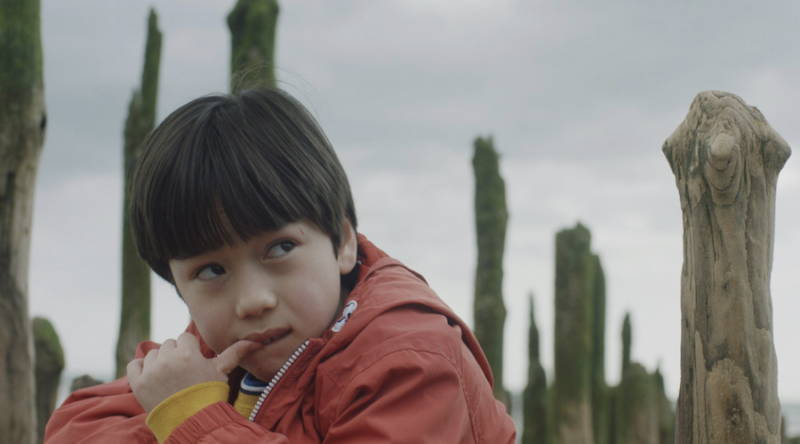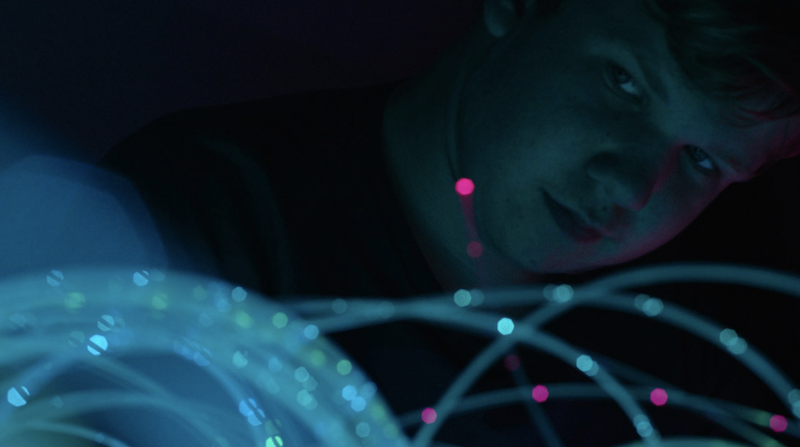The Reason I Jump Combats Stereotypes of Autism
Review of The Reason I Jump presented by SIFF Cinema
Written by Teen Editor Anya Shukla and edited by TeenTix Teaching Artist Vivian Hua

I’m not sure if I was overly emotional last Tuesday, but I started crying about five minutes into The Reason I Jump; the waterworks didn’t stop until the end of the hour-and-a-half-long movie. Each new beautifully-shot scene added new depth to my understanding of autism.
The film is based on the book of the same name by Naoki Higashida, a nonverbal autistic teenager from Japan. Directed by Jerry Rothwell, The Reason I Jump tells the story of five youth— Amrit, Joss, Ben, Emma, and Jessina—with autism. The movie strives to emulate the experience of living with autism, featuring crisp, detail-filled shots and a soundtrack with large amounts of ambient noise. The Reason I Jump also highlights lines from Naoki’s book, interspersed as voiceovers.
The Reason I Jump begins by telling the story of young Amrit and her mother, Aarti, both of whom live in India. Amrit’s story begins with a blue and white blur, almost like eyelashes blinking double-time. Hazy colors and facial features shift in and out of focus. As the camera zooms out, the object onscreen becomes apparent: a black, faintly-rattling fan. As the voiceover mentions, this is how those with autism view their surroundings: “For me, the details jump straight out first of all, and then gradually, detail by detail, the whole image floats up into focus.” Bright red honeycombs that transform into the fabric for a curtain. A flame that turns into a candle, sitting in a pool of water. As someone without personal experience with autism, this idea showed me that autistic people have a different—but no less valuable—way of seeing the world.
However, Aarti initially tried to make Amrit follow social norms. “I tried to stop her from being herself,” her mother said, holding her face in her hands. But when she read Naoki’s book and realized what life with autism is like, she began to think differently. “I am so estranged from my own child,” she admitted. “I do not know how I fit into a mother’s role.”
The camera did not look away from her pain; the moment felt like a violation of personal privacy. My tears, which had slowed to a trickle, came back in full force.
Contrary to stereotypes of those with autism—that they tend to pursue STEM and enjoy numbers—Amrit is an artist. She paints, sculpts, draws; her creations feature vivid colors, stylized faces. A smiling girl sitting in a rickshaw, hand up in a wave. Two women holding hands in front of a turquoise, apartment-building-filled background. My first thought when I saw her paintings was that they should be in an art gallery. And by the end of the movie, they were: Amrit held her first solo show.

The relationship between Ben and Emma, two friends who are both nonverbal and autistic, is similarly heartwarming. However, instead of art, their method of communication is the letter board. Each board has the entire alphabet printed on it, and the two point to individual letters until they slowly spell out sentences. The process is time-consuming—both of them sometimes find themselves losing focus while speaking—yet exciting. Before they learned about letter boards, neither Ben nor Emma could participate in extensive coursework. “They wasted our time,” Emma said. Now, they can take charge of their learning.
Even without spoken communication, the two have been close since childhood, as evidenced by a series of pictures with the two of them together. “He was my first friend,” Emma says of Ben while they are on a walk together. Ben reciprocates: “Emma is my North Star.” As the voiceover mentions, Ben and Emma’s story exemplifies that people with autism also crave human connection and should not be pigeonholed as loners.
My one issue with the movie came at its end. Throughout the film, voiceovers from Naoki’s book had been paired with shots of a nonverbal autistic boy (Jim Fujiwara) exploring nature, climbing over bridges, holding tight to chain-link fences. However, in the last five minutes of The Reason I Jump, the boy walks with purpose through a neighborhood, making his way to a house. Inside sat the English translator of Naoki’s book, David Mitchell, who had been interviewed several times during the movie. Now, he translates a page from Japanese to English. The boy presses his face against the window, then leaves. Mitchell looks up, and sees the ghost of the boy’s breath on the window. There seems to be some meaning to this sequence of events, some symbolic connection. But for a movie without overt symbolism, a movie about human beings and their unfettered, organic relationships to one another, it feels like an unwelcome intrusion.
That being said, all of The Reason I Jump’s subjects overcome many barriers—societal and cultural stigma, lack of resources—to communicate with others. And most importantly, the movie demonstrates that autistic people are whole humans, with emotions, dreams, and a desire for interaction.
The Reason I Jump screened at SIFF Virtual Cinema, January 8 - February 25, 2021. For more information see here.
Lead photo credit: Film still from The Reason I Jump directed by Jerry Rothwell
This review was written as part of mentorship program where members of the Teen Editorial Staff receive one-on-one mentorship by Press Corps Teaching Artists and professional critics. The Teen Editorial Staff is made up of 6 teens who lead the TeenTix Newsroom and curate the review portion of the TeenTix blog. More information about the Teen Editorial Staff can be found HERE.
The TeenTix Press Corps promotes critical thinking, communication, and information literacy through criticism and journalism practice for teens. For more information about the Press Corps program see HERE.


